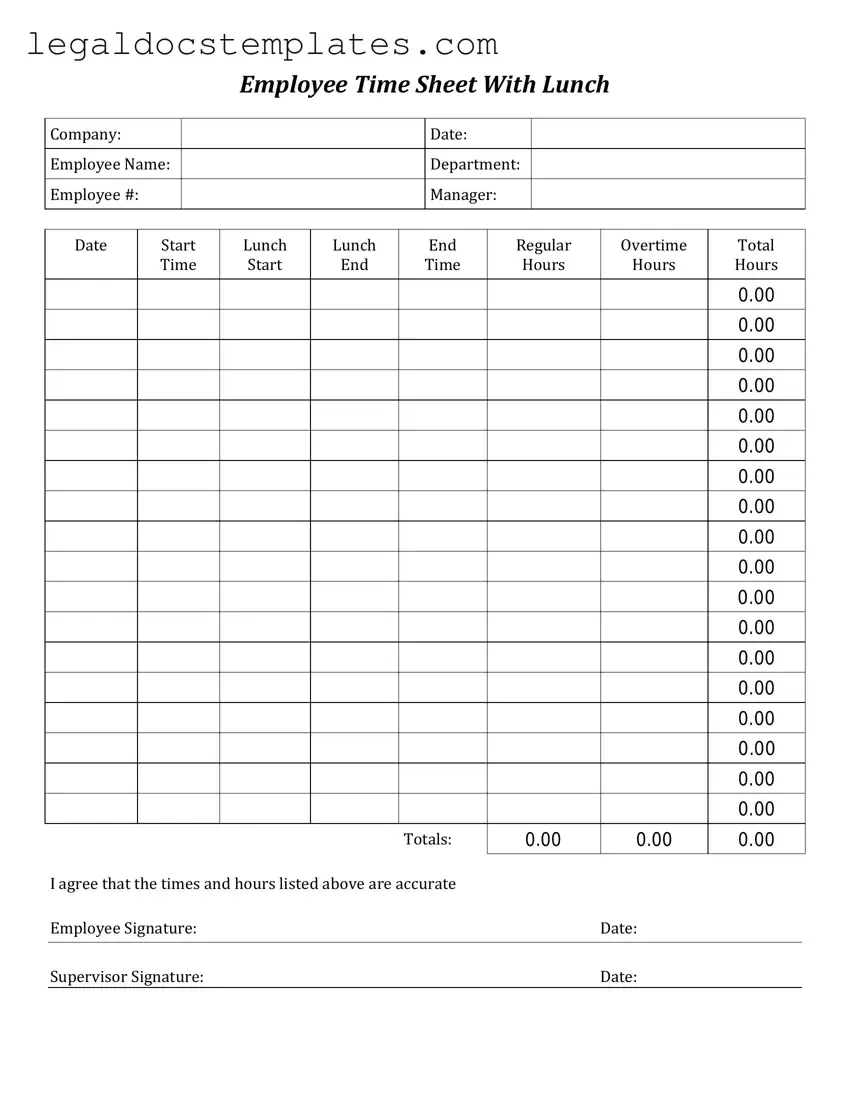A Pay Stub is remarkably similar to a Time Card form, as both documents detail an employee's work hours and financial compensation. While a Time Card typically records the number of hours worked in a specific period, a Pay Stub goes a step further by providing a breakdown of earnings, taxes, and deductions. This makes the Pay Stub an essential document for understanding one's net pay after all withholdings.
Timesheets share a common purpose with Time Cards, as they are both used to track the amount of time an employee spends working. Timesheets, however, often include more detailed information such as the specific tasks or projects worked on during the recorded times. This additional detail supports project management and accounting practices, making Timesheets a more comprehensive tool for business operations.
The Employee Schedule is another document that bears similarity to a Time Card form. Both are tools for managing and documenting an employee's time. However, an Employee Schedule is used to plan future work times, while a Time Card records actual hours worked. In essence, the Schedule sets expectations, and the Time Card confirms fulfillment of those expectations.
An Invoice, particularly for freelancers or contractors, has notable similarities to a Time Card form. Both serve as records of work done and as a basis for payment. An Invoice, like a Time Card, will often list dates and hours worked along with a rate of pay, but it additionally formalizes the request for payment from a client or employer, thus playing a crucial role in the billing process.
Project Time Sheets, much like general Timesheets, are closely related to Time Cards but with a focus on capturing the time spent on specific projects. They provide insights into labor costs associated with individual projects, facilitating project management and financial planning. By contrast, Time Cards might not always specify the projects on which hours were worked.
The Attendance Record, which tracks employees' presence or absence at work, shares a foundational goal with the Time Card form. Both are pivotal in payroll processing and HR management. However, an Attendance Record specifically monitors attendance status (such as presence, absence, tardiness) without necessarily detailing the hours worked, as a Time Card does.
Expense Reports can be seen as cousins to Time Cards in the context of documenting and managing work-related expenditures rather than time. Employees use Expense Reports to outline costs incurred while performing job duties, which, like hours on a Time Card, must be approved for reimbursement. Both documents are integral to financial accountability within organizations.
Lastly, Production Reports, which detail the output or work accomplished during a particular period, share a goal with Time Cards: measuring productivity. While Time Cards focus on the input of labor hours, Production Reports emphasize the outcomes of those hours. This makes Production Reports essential for assessing efficiency and effectiveness in operational environments.

